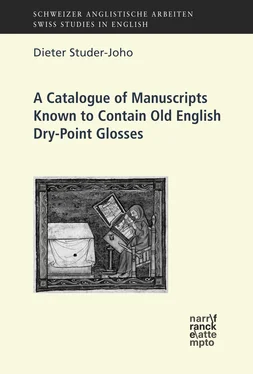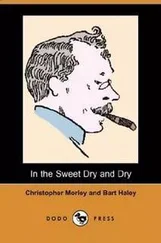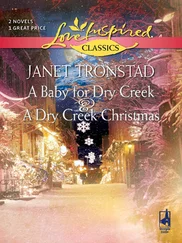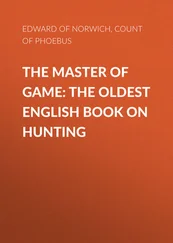3 a G. translation of the L. base text, typesetting the presumed lemma of the base text in italics;
4 a detailed transcription of the lemma followed by a detailed transcription of the interpretamentum;13
5 comments on the precise placement of the interpretamentum with respect to the lemma and comments on uncertain readings and possible alternative readings;
6 a detailed linguistic commentary, entailing (a) lemmatization, (b) exhaustive morphological discussion of the respective forms with respect to case, number, person, declension class, conjugation class, mood, voice, tense etc., (c) bibliographical cross-references to relevant dictionaries, grammars or word studies, (d) a discussion of the semantic equivalence of lemma and interpretamentum and (e) references to equivalent lemma/interpretamentum pairs.
Since dry-point writing can sometimes offer variable degrees of legibility, a small set of symbols and diacritics is generally used to indicate such considerations (cf. Glaser 1996: 100). In OHG dry-point gloss editions, uncertain readings are customarily indicated by adding dots underneath doubtful letters, such as <���ị> for an uncertain reading of . This is not to be confused with an expunction mark (cf.p. 83 below). If not even an attempt at a reading seems possible to the editor, a dot <.> is written in lieu of the undecipherable letter. If the number of undecipherable letters cannot be specified, three dots – i.e. a horizontal ellipsis – are put in curly brackets <{…}> (e.g. in Nievergelt 2007, 2009a) or square brackets <[…]> (e.g. in Ernst 2007). Sometimes, the editor cannot even decide whether the scratches are letters or just suspicious-looking creases in the parchment surface. In such cases, one or two question marks are used to indicate the possible presence of one or several further letters or scratches.
Since Nievergelt’s (2007) and Ernst’s (2007) in-depth analyses of the physical properties of dry-point glosses, it has also become customary to classify the physical nature of the dry-point writing (i.e. cutting the surface vs. mere indentation or presence of pigment or rust residues vs. entry without any traces of discolouring). Since dry-point writing usually does not offer the same palaeographical detail as ink writing, such observations are crucial in distinguishing layers of dry-point gloss activity. Both Nievergelt (2007: 47–59) and Ernst (2007: 71–73) present classificatory systems of dry-point glosses based on their physical properties (see above p. 27). Nievergelt (2007: 70–74) also discusses the special difficulties that dry-point writing presents to the human eye due the often only minute contrast differences that are created by the impressions on the parchment surface.
Since editions that follow Glaser’s model are much more refined than the list-like editions that were customary during the nineteenth and the better part of the 20 thc., they are necessarily much longer. Where a traditional gloss edition (such as StSG , Napier 1900, Meritt 1945 or even Gwara 1992) would have one line, consisting of a lemma-interpretamentum pair, with perhaps a footnote, the edition of an averagely complex gloss in Glaser (1996), Nievergelt (2007) or Ernst (2007) will easily occupy a page. The OHG dry-point gloss Rotlaħħ on f. 176 vof München, Bayerische Staatsbibliothek Clm 6272München, Bayerische StaatsbibliothekClm 6272 ( BStK : 1033–1034 [no. 516]) may serve as an extreme example. The interpretamentum is entered in the right margin and, hence, the corresponding L. lemma of the base text (HIERONYMUS, Commentarius in Evangelium secundum Mathaeum ) is difficult to identify. Meritt (1934: 232) interprets this dry-point entry as two separate glosses, even though there is no space in between, namely OHG rot glossing L. roseo and OHG tuhh- glossing L. limbo . He duly lists the lemmata and the interpretamenta in two half-lines with minimum space requirements, so that another two dozens of lemma-interpretamentum pairs can be fitted onto the same page. Meritt relegates some observations about his readings to two short footnotes (1934: n. 61 and n. 62): the first footnote gives a deviating form for the first lemma in the critical edition consulted by Meritt, which reads L. rufo instead of L. roseo (i.e. PL 208: 24), and the second footnote suggests the expansion OHG tuhhil for the partial second interpretamentum OHG tuhh- , also referring to two instances of that word in StSG . In summary, the edition of this dry-point entry takes up two half-lines and two short footnotes.
In Ernst (2007: 317–322 [no. 39]) the edition of the same dry-point entry runs for five full pages. After describing the appearance of the gloss in detail and discussing readings by former gloss scholars (including Meritt), Ernst presents two different interpretations of the gloss, based on the allocation of the gloss to two different lemmata in the base text. Pairing up the OHG gloss with L. clamidem coccineam or perhaps roseo limbo (as Meritt suspected), it can be interpreted as a compound or as a nominal group meaning ‘red fabric’ or ‘red coat’. However, in the context of Christ’s crucifixion, pairing the OHG gloss up with either L. spineam (which may be corroborated by that word’s physical proximity on the MS page and by a possible signe-de-renvoi , consisting of a vertical dry-point bar on top of L. spineam ) or L. calamum (which also features a signe-de-renvoi , consisting of the Greek letter ϕ, though that may perhaps point to a partly legible dry-point entry in the left margin), the gloss could be interpreted as referring to some kind of plant, perhaps ‘buckthorn’ (based on L. spineus ‘thorny’, referring to Christ’s crown) or ‘reed’ (based on L. calamus ‘reed’, which the soldiers gave to Christ as a mocking symbol of his power).14 Ernst’s exhaustive treatment of the gloss – of which I have only sketched the bare outlines – shows great erudition and makes for a highly informative read, yet it ultimately leaves us in a state of informed ignorance: we still do not know what the gloss actually means. The range of possibilities has been limited drastically, yet several candidates seem almost equally eligible and it is clear that lexicographers have an easier job incorporating Meritt’s edition rather than Ernst’s in their work.
It is to be expected that further OHG dry-point MSS will be identified in the near future and, as Stricker (2009: 1655) points out, it may safely be assumed that the glosses to be found in them will change our knowledge of OHG substantially.
2.4.3 Dry-Point Glossing in Old SaxonOld Saxon dry-point glosses
OS dry-point glosses have been reported from four MSS so far (cf. Nievergelt 2013: 387). Two MSS were already known in 2005 when BStK was published, namely Düsseldorf, Universitäts- und Landesbibliothek Ms. B 80Düsseldorf, Universitäts- und LandesbibliothekMs. B 80 ( BStK : no. 104) and Düsseldorf, Universitäts- und Landesbibliothek Ms. F 1Düsseldorf, Universitäts- und LandesbibliothekMs. F 1 ( BStK : no. 105). Two further MSS have been identified since. Firstly, Prof.Dr. Nievergelt (2011: 312) reports the existence of ca. 500 OS and OHG glosses (a unspecified number of them entered in dry-point) – in Budapest, Országos Széchényi Könyvtár CLMAE 7Budapest, Országos Széchényi Könyvtár CLMAE 7; an edition remains yet to be published. Secondly, Prof. Dr. Nievergelt tells me that Essen, Münsterschatzkammer Hs. 1Essen, Münsterschatzkammer Hs. 1 ( BStK : no. 149), whose dry-point glosses had not yet been completely identified, contains some 50 still unedited OS dry-point glosses.1 In BStK, where both OHG and OS gloss MSS are combined, the OS gloss MSS clearly play a subsidiary role. Recent developments show, however, that further OS dry-point gloss finds are likely to be made, perhaps even in the near future.
Читать дальше












